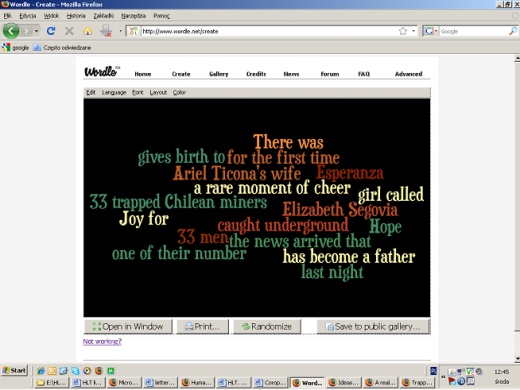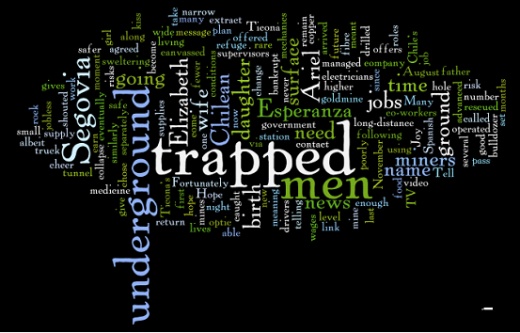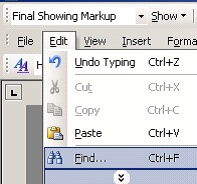Editorial
You can read more on Word Clouds in HLT in Issue 3; June 2010
Word Clouds for Chunks
Hanna Kryszewska, Poland
Hanna Kryszewska is a teacher, teacher trainer, trainer of trainers. She is a senior lecturer at the University of Gdańsk, and EU Teacher Training College where she trains pre-service teachers. She is also Director of Studies at SWPS, Sopot, Poland. She is co-author of resource books: Learner Based Teaching, OUP, Towards Teaching, Heinemann, The Standby Book, CUP, Language Activities for Teenagers, CUP and a course book series for secondary schools: ForMat, Macmillan. She is also co-author of a video based teacher training course: Observing English Lessons. Hania is a Pilgrims trainer and editor of HLT Magazine.
E-mail: hania.kryszewska@pilgrims.co.uk
Menu
Introduction
Activity 1
Activity 2
Useful websites
After I had published my first article on word clouds, I received this e-mail from Jamie Keddie
Something that I should have mentioned to you is a way that you can use Wordle for phrase clouds (as opposed to word clouds). You have to make use of the ~ sign. I wrote a post about it here: www.jamiekeddie.com/602
His message inspired me to experiment with word clouds for chunks and I came up with two activities. Thank you Jamie.
Activity 1 focuses on identification of chunks. Activity 2 looks at word frequencies and identification of chunks in a text when the text is treated as a (mini) corpus.
For both the activities you need to have a computer with an Internet connection and a data projector in class, ideally in a computer lab so that the students can make their own word clouds to process texts. Alternatively some stages of the activities can be done as homework on the students’ own computers.
Before class
- Find an article you want to work on, save the website details and the text.
Example:
www.guardian.co.uk/world/2010/sep/15/chilean-miner-daughter-born-esperanza
Trapped Chilean miner becomes father
Joy for 33 men caught underground as Ariel Ticona's wife, Elizabeth Segovia, gives birth to girl called Esperanza (Hope)
There was a rare moment of cheer last night for the 33 trapped Chilean miners as the news arrived that one of their number has become a father for the first time.
Ariel Ticona was able to pass a message to his wife, Elizabeth Segovia, following the birth of their daughter, using a fibre optic video link set up between ground level and the small underground refuge where they could remain trapped for several months.
"Tell her to change the name of our daughter ... and give her a long-distance kiss," he said, as other miners shouted, "We're going to name her Esperanza," meaning "hope" in Spanish.
Fortunately Segovia agreed, telling a Chilean TV station she had come up with the same plan separately.
There is more good news for the trapped men, albeit for some time in the future: once they are eventually rescued they need never risk their lives underground again to earn a living.
With the company that operated the poorly managed copper and goldmine going bankrupt, Chile's government has canvassed for new job offers for the trapped men and their 317 co-workers who, while safe above ground, are now similarly jobless.
The men have been offered no fewer than 1,188 jobs, many with safer and more advanced mines. There would be no need for them to return underground – most of the jobs are surface roles such as truck or bulldozer drivers, electricians, mechanics and supervisors.
The 33 men have been trapped in sweltering conditions since a rock collapse on 5 August. While they have had contact with the surface, along with food, medicine and other supplies, via a narrow supply tunnel, it take until November before hole wide enough to extract them can be drilled.
Many of those trapped chose to work at the mine because the risks meant higher wages.
|
- Prepare the first two paragraphs combining the chunks using the ~ sign instead of spaces between words, e.g.
Joy~for 33~men caught~underground as Ariel~Ticona's~wife, Elizabeth~Segovia, gives~birth~to girl~called Esperanza (Hope)
There~was a~rare~moment~of~cheer last~night for~the 33~trapped~Chilean~miners as the~news~arrived~that one~of~their~number has~become~a~father for~the~first~time.
Note that in the example above not all of the words are connected by a ~. I have selected what I think are the important chunks.
- Copy and paste the text you have doctored into Wordle and make a word cloud. Save it, e.g.

- Make copies of the rest of the article to give the class.
In Class
- Display the word cloud above and explain briefly how it was produced.
- Students work in pairs. They use the chunks from the word cloud to write their version the first two paragraphs of a newspaper article.
- Pairs compare their versions.
- Display the first two paragraphs of the article and students compare their versions with the original.
- Explain in detail how the chunks were produced and process one or two more example sentences in the same way with the whole class.
- Give out different fragments of the article to different groups, e.g.:
Ariel Ticona was able to pass a message to his wife, Elizabeth Segovia, following the birth of their daughter, using a fibre optic video link set up between ground level and the small underground refuge where they could remain trapped for several months.
"Tell her to change the name of our daughter ... and give her a long-distance kiss," he said, as other miners shouted, "We're going to name her Esperanza," meaning "hope" in Spanish.
Fortunately Segovia agreed, telling a Chilean TV station she had come up with the same plan separately.
|
There is more good news for the trapped men, albeit for some time in the future: once they are eventually rescued they need never risk their lives underground again to earn a living.
With the company that operated the poorly managed copper and goldmine going bankrupt, Chile's government has canvassed for new job offers for the trapped men and their 317 co-workers who, while safe above ground, are now similarly jobless.
The men have been offered no fewer than 1,188 jobs, many with safer and more advanced mines. There would be no need for them to return underground – most of the jobs are surface roles such as truck or bulldozer drivers, electricians, mechanics and supervisors.
|
The 33 men have been trapped in sweltering conditions since a rock collapse on 5 August. While they have had contact with the surface, along with food, medicine and other supplies, via a narrow supply tunnel, it take until November before hole wide enough to extract them can be drilled.
Many of those trapped chose to work at the mine because the risks meant higher wages.
|
- Students process their fragments of the text marking chunks using the ~ sign. Help them indentify chunks and insert the ~as and when necessary.
- Groups prepare their word clouds and print them.
- The word clouds circulate and other groups try to reconstruct the original paragraphs.
- Finally they read the original text.
Variation
If you have no computer lab in the school, stages 7-8 can be individual homework.
Before class
- Find an article you want to work on, save the website details and the text.
- Save the text as a word file.
- If the class is not conducted in a computer lab, prepare handouts with the text.
In class
- Give out copies of the full text or show it on the screen. The students read the text.
- Students look through the text and predict the two or three most common words.
- Keep a record of their choices on the board.
- Make a word cloud with the text(see below).. Explain that the more frequent the word is the bigger font is used for it. The example is for the text on miners used in the first activity above.

- Compare the data from the word cloud and what the students predicted. In this example the two most common words are:
- Use the ‘find’ function to find the words in the text.

- Highlight the two most frequent words the students have identified:
Trapped Chilean miner becomes father
Joy for 33 men caught underground as Ariel Ticona's wife, Elizabeth Segovia, gives birth to girl called Esperanza (Hope)
There was a rare moment of cheer last night for the 33 trapped Chilean miners as the news arrived that one of their number has become a father for the first time.
Ariel Ticona was able to pass a message to his wife, Elizabeth Segovia, following the birth of their daughter, using a fibre optic video link set up between ground level and the small underground refuge where they could remain trapped for several months.
"Tell her to change the name of our daughter ... and give her a long-distance kiss," he said, as other miners shouted, "We're going to name her Esperanza," meaning "hope" in Spanish.
Fortunately Segovia agreed, telling a Chilean TV station she had come up with the same plan separately.
There is more good news for the trapped men, albeit for some time in the future: once they are eventually rescued they need never risk their lives underground again to earn a living.
With the company that operated the poorly managed copper and goldmine going bankrupt, Chile's government has canvassed for new job offers for thetrapped men and their 317 co-workers who, while safe above ground, are now similarly jobless.
The men have been offered no fewer than 1,188 jobs, many with safer and more advanced mines. There would be no need for them to return underground – most of the jobs are surface roles such as truck or bulldozer drivers, electricians, mechanics and supervisors.
The 33 men have been trapped in sweltering conditions since a rock collapse on 5 August. While they have had contact with the surface, along with food, medicine and other supplies, via a narrow supply tunnel, it take until November before hole wide enough to extract them can be drilled.
Many of those trapped chose to work at the mine because the risks meant higher wages.
|
- Ask the students to highlight the whole chunks in which these words appear, e.g.:
Trapped Chilean miner becomes father
Joy for 33 men caught underground as Ariel Ticona's wife, Elizabeth Segovia, gives birth to girl called Esperanza (Hope)
There was a rare moment of cheer last night for the 33 trapped Chilean miners as the news arrived that one of their number has become a father for the first time.
Ariel Ticona was able to pass a message to his wife, Elizabeth Segovia, following the birth of their daughter, using a fibre optic video link set up between ground level and the small underground refuge where they could remain trapped for several months.
"Tell her to change the name of our daughter ... and give her a long-distance kiss," he said, as other miners shouted, "We're going to name her Esperanza," meaning "hope" in Spanish.
Fortunately Segovia agreed, telling a Chilean TV station she had come up with the same plan separately.
There is more good news for the trapped men, albeit for some time in the future: once they are eventually rescued they need never risk their lives underground again to earn a living.
With the company that operated the poorly managed copper and goldmine going bankrupt, Chile's government has canvassed for new job offers for the trapped men and their 317 co-workers who, while safe above ground, are now similarly jobless.
The men have been offered no fewer than 1,188 jobs, many with safer and more advanced mines. There would be no need for them to return underground – most of the jobs are surface roles such as truck or bulldozer drivers, electricians, mechanics and supervisors.
The 33 men have been trapped in sweltering conditions since a rock collapse on 5 August. While they have had contact with the surface, along with food, medicine and other supplies, via a narrow supply tunnel, it take until November before hole wide enough to extract them can be drilled.
Many of those trapped chose to work at the mine because the risks meant higher wages.
|
- Discuss the answers with the whole class.
- In class or as homework students work with texts of their own choice in the above way. The findings then circulate
www.wordle.net/
http://blog.wordle.net/2008/06/keep-words-together-with-tilde.html
www.jamiekeddie.com/602
www.ideastoinspire.co.uk/wordle.htm

Please check the An Introduction to Using Technology in the Classroom course at Pilgrims website.
Please check the Using Technology in the Classroom – Intermediate Level course at Pilgrims website.


|